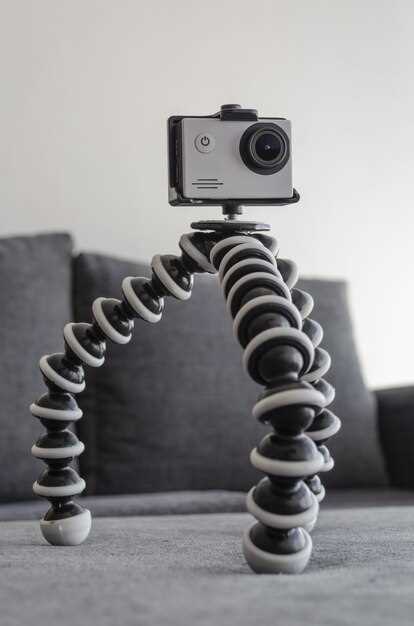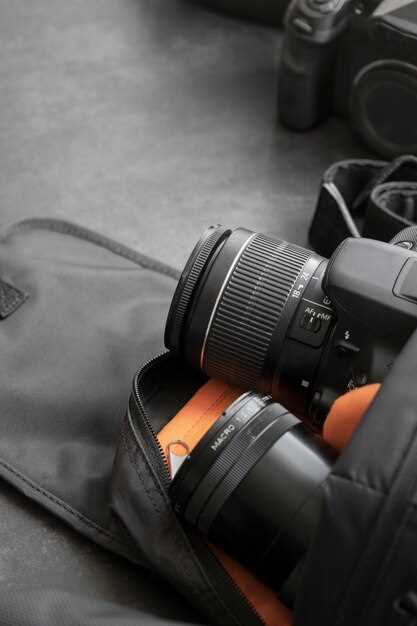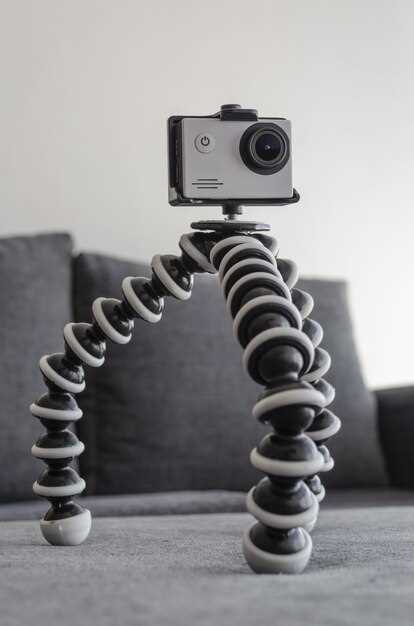Looking for a reliable camera that caters to vlogging on the go? One standout option is the Sony ZV-1–a feature-packed powerhouse designed for content creators. Its 20.1 MP 1.0-type sensor ensures stunning image quality, even in challenging lighting conditions. With its fast-hybrid autofocus, you can effortlessly track moving subjects, maintaining sharpness and clarity as you capture dynamic scenes.
The Canon PowerShot G7 X Mark III also deserves mention for its remarkable capabilities. Equipped with a 1-inch sensor, it excels in both stills and video. Thanks to its high-quality 4K video recording and an external mic input, your audio will match the excellence of your visuals. Its compact design fits comfortably in your hand or pocket, making it easy to carry and use anywhere you go.
Adding to the list, the Fujifilm X-S10 offers vloggers exceptional stabilization with its in-body image stabilization system. This means shake-free footage, regardless if you’re walking or in an action-packed setting. Its 26.1 MP sensor and color science tradition from Fujifilm ensure vivid, true-to-life imagery, bringing authenticity to your storytelling.
For those seeking premium video features, the Panasonic Lumix LX100 II delivers. A Micro Four Thirds sensor and Leica DC lens allow for incredible depth of field and bokeh effects, adding a professional touch to your vlogs. This camera is a formidable choice due to its versatile lens and excellent video potential–it supports 4K video recording with ease, empowering creativity in every shot.
Finally, consider the Ricoh GR III, especially if street vlogs are your focus. As a compact powerhouse, it boasts a prime 28mm equivalent lens and a sharp 24.2 MP APS-C sensor. Its pocket-sized design ensures mobility, while the intuitive touchscreen interface accelerates quick adjustments mid-shoot. Every minor detail enhances your visual story, making it as engaging as it is authentic.
Understanding the Needs of Vloggers

Investing in a compact camera for vlogging requires thoughtful consideration of features that directly impact your content quality. Prioritize these key aspects to make an informed decision:
- Portability: A vlogger’s lifestyle often involves travel and dynamic shooting environments. Opt for lightweight and compact cameras that fit easily into your bag, ensuring you’re always ready to capture spontaneous moments without being weighed down.
- Video Quality: High-resolution video is critical for engaging content. Cameras offering at least 1080p resolution are standard, but 4K capabilities can future-proof your investment and deliver stunning visuals.
- Stabilization: Smooth footage enhances viewer experience. Look for models with built-in optical or digital stabilization to minimize shakiness, especially during handheld shoots or movement-intensive scenes.
- Audio Quality: Crisp and clear audio can set your vlogs apart. Cameras with external microphone jacks provide flexibility in audio capture, allowing for professional quality sound when paired with the right equipment.
- Autofocus Performance: Reliable autofocus systems are essential, particularly when shooting solo or on the move. Fast and accurate focus ensures sharp subject tracking, reducing the need for constant manual adjustments.
- Battery Life: Long-lasting batteries allow for extended shooting sessions. Consider models that offer additional battery packs or USB charging capabilities for convenience during travel.
- Connectivity: Seamless file transfer to smartphones or tablets can significantly speed up editing and uploading processes. Cameras with Wi-Fi, Bluetooth, or NFC connectivity enable easy sharing of content to social media platforms.
By aligning camera features with your vlogging needs, you enhance both the production value and efficiency of your creative process. Choose wisely to ensure your equipment supports, rather than hinders, your storytelling ambitions.
Compact vs. Traditional: Choosing the Right Form Factor
Select compact cameras if portability tops your priority list. They’re lightweight, easy to carry, and fit seamlessly into small bags or even pockets. This means more spontaneous shots and less fatigue during long vlogging sessions. Models like the Sony ZV-1 and Canon G7X Mark III pack excellent video capabilities into small forms, offering 4K recording, superb autofocus, and in-built stabilization.
On the contrary, traditional DSLRs and mirrorless cameras might appeal if you seek superior image quality and versatility. These larger cameras generally offer bigger sensors, more manual controls, and interchangeable lenses, which can significantly enhance the creative aspects of your vlogs. The likes of the Canon EOS R50 and Nikon Z30, though not as portable, provide top-tier performance and adaptability for more controlled shooting environments where set up time is available.
Consider your filming locations and how often you’re on the move. If filming frequently involves travel or outdoor activities, compact cameras provide the ease needed without compromising too much on quality. However, if you tend to shoot in controlled settings or desire specific artistic effects, the flexibility of traditional cameras may be more beneficial.
Budget is another key factor. Compact cameras generally cost less, making them accessible for beginners or those who vlog casually. Traditional cameras, while a bigger investment, often prove more cost-effective long term for advanced users looking to expand their gear and capabilities. Choose what aligns with your style and goals, ensuring your camera becomes an extension of your creative process.
This section will discuss the advantages of compact cameras over traditional DSLRs and mirrorless options for vlogging.
Choose a compact camera for vlogging to enjoy its portability, ease of use, and advanced features that facilitate high-quality content creation. Compact cameras are typically lighter and smaller, making them perfect for travel and on-the-go shooting. Their user-friendly design allows quick setup and seamless operation, enhancing your vlogging experience, particularly when recording spontaneously.
- Portability: Compact cameras fit easily in your bag or pocket, unlike bulky DSLRs or mirrorless models. This ensures you can carry them effortlessly for travel vlogs or outdoor shoots.
- Simplicity: Most compact cameras offer automatic modes that intelligently adjust settings such as exposure and focus, enabling you to concentrate more on content creation and less on technical aspects.
- Affordability: Generally, compact cameras are more budget-friendly, offering you excellent features without the hefty price tag associated with DSLR and mirrorless options. This makes them an accessible choice for vloggers just starting out.
- Integrated Lenses: With built-in zoom lenses, compact cameras eliminate the need for multiple lens purchases, covering a range of shooting scenarios from wide-angle to close-ups with just one device.
- Stability: Many compact cameras come equipped with advanced image stabilization, allowing you to generate smoother footage, crucial while recording handheld or in motion.
Embrace the compact camera for its ease of use and versatility, perfect for elevating your vlogs without the need for extensive gear. Experience the benefits of creating with a device that understands your content needs while providing professional-level results.
Key Features for Vlogging Success
Consider equipping your camera with a microphone input to vastly improve audio quality. Superior sound can make your vlogs stand out, enhancing viewer engagement. Digital stabilization is another must-have; it minimizes shakiness, providing smooth, professional-looking footage, even during handheld shoots.
Invest in a camera with high-quality autofocus capabilities. Fast and accurate focusing ensures your subjects remain sharp, even with changing distances or moving scenes. A 180-degree flip screen allows for effortless framing and monitoring. This feature is invaluable for vloggers who need to see themselves while filming.
Evaluate battery life. A camera that supports USB charging can be a lifesaver, allowing you to recharge from a power bank on the go. Another critical feature is the availability of various shooting modes. Slow motion, time-lapse, and 4K video recording offer creative versatility, keeping your content fresh and engaging.
| Feature | Benefit |
|---|---|
| Microphone Input | Improves audio quality |
| Digital Stabilization | Reduces shakiness |
| High-Quality Autofocus | Keeps subjects sharp |
| Flip Screen | Allows effective framing |
| Battery Life | Extends filming time |
| Shooting Modes | Adds creative options |
Explore the must-have features in compact cameras that cater specifically to vlogging, such as flip screens, audio input ports, and stabilization.
Prioritize compact cameras with flip screens that enable easy self-monitoring while recording yourself. A flip screen allows you to frame your shot perfectly without needing an assistant, making it a vital tool for solo vloggers. Models such as the Canon PowerShot G7 X Mark III offer this functionality, enhancing your ability to create captivating content.
Ensure your camera includes audio input ports for external microphones. Internal mics often capture subpar audio with background noise, which can detract significantly from your videos. Brands like Sony provide models such as the ZV-1 with an audio input port, allowing you to connect lavalier or shotgun microphones for crisp, clear sound.
Stabilization should not be overlooked, especially for those who vlog on the move. Optical or electronic image stabilization reduces the jittery effect that can occur during handheld shooting. Cameras like the Panasonic Lumix G100 integrate powerful stabilization features, offering smooth footage even when you’re walking or traversing rough terrain.
Each of these features – flip screens, audio input ports, and stabilization – significantly enhances the quality and professionalism of your vlogs, making them more engaging for your audience. When selecting your compact camera, these elements should be top priorities to ensure high-quality content creation.
Budget Considerations for Aspiring Vloggers
Identify your budget range and prioritize features essential for your content style. A good starting point is setting a realistic maximum spend by taking into account not only the camera but also any necessary accessories.
- Entry-Level Options: Allocate $300-$500 for decent compact cameras. Many models in this range offer good video quality and essential features like image stabilization. Popular options include the Canon PowerShot G9 X Mark II and the Sony Cyber-shot DSC-HX80.
- Mid-Range Choices: If your budget allows for $500-$1000, consider cameras with larger sensors and improved low-light performance. Options like the Sony ZV-1 or the Canon G7 X Mark III provide great quality and versatility for vlogging.
- Accessory Spend: Don’t overlook items like tripods, external microphones, and spare batteries. Proper sound quality requires a good mic, which typically costs $50-$100. Tripods and lighting options range from $30 to $150 depending on quality and features.
- Additional Expenses: Factor in costs for editing software, which can be a one-time purchase or a subscription. Free options exist but professional-grade software like Adobe Premiere Pro offers greater flexibility and costs around $20 per month.
Plan your purchases with future upgrades in mind. Start small and invest strategically as your audience grows and you refine your style. Remember, content creativity elevates your vlogs more than expensive gear.
Offer insights on how to balance cost with functionality, focusing on entry-level and premium compact camera options.
The secret lies in pinpointing your priorities and aligning them with the camera’s features. For entry-level options, concentrate on basics like image quality, battery life, and ease of use. Models such as the Canon PowerShot G7 X Mark III offer excellent 4K video recording and a user-friendly interface, all at an accessible price point.
On the premium end, consider how extra features can enhance your content. Cameras like the Sony ZV-1 pack advanced autofocus, superior low-light performance, and built-in ND filters that grant professional polish to your footage. Invest in a premium model if features like a microphone input or live streaming capability are non-negotiable for your content creation needs.
Always weigh the long-term benefits against the initial expense. An entry-level camera may save money now, but a premium one can expand creative possibilities and potentially reduce upgrade cycles. Factor in accessories such as tripods or external mics, which can also impact your budget but significantly improve quality. Efficiently merging requirements with available features will help you find the right camera without overspending.
Portability and Durability for On-the-go Filming
Packing a punch while being easy to carry, the Sony ZV-1 offers vloggers a perfect mix of lightweight design and sturdy construction. At just 294 grams, it fits comfortably in your pocket or small bag, ensuring effortless transport during travel. Its robust build features a solid plastic exterior with a moderate grip, which withstands minor bumps and scratches, making it ideal for shooting in dynamic environments.
For those who prioritize portability without compromising on durability, the Canon G7 X Mark III is another excellent option. Weighing a mere 304 grams, it offers compact dimensions that allow quick access for spontaneous filming. The camera’s metal and rubberized body enhance durability, protecting it from everyday wear and tear.
Vloggers often find themselves in unpredictable conditions, and the weather-sealed design of the Fujifilm X100V ensures reliable performance across various climates. Although slightly heavier at 478 grams, its durability compensates with protection against dust, moisture, and mild shocks, making it a flexible choice for outdoor adventures.
For extreme portability, consider the DJI Osmo Pocket. This compact powerhouse is only 116 grams and offers excellent stabilization, making it a breeze to carry and use while walking. Its protective casing shields against environmental stressors, providing peace of mind as you capture footage on the go.
Finally, the Panasonic Lumix LX100 II offers a balance of weight and ruggedness. At 392 grams, it is both portable and equipped with a magnesium alloy body that withstands harsh conditions, from bustling city streets to the rough terrains of nature trails. Its versatility ensures you’re always ready for the next shot.
| Camera Model | Weight (grams) | Durability Features |
|---|---|---|
| Sony ZV-1 | 294 | Plastic exterior, moderate grip |
| Canon G7 X Mark III | 304 | Metal and rubberized body |
| Fujifilm X100V | 478 | Weather-sealed design |
| DJI Osmo Pocket | 116 | Stabilization, protective casing |
| Panasonic Lumix LX100 II | 392 | Magnesium alloy body |
Discuss how compact cameras appeal to vloggers who need a sturdy yet portable solution for diverse filming locations.
Compact cameras are the ideal choice for vloggers due to their lightweight design and robust build. Many models, such as the Sony ZV-1 or Canon G7X Mark III, offer excellent image stabilization and strong casings, making them perfect companions for travel. Their portability allows vloggers to capture high-quality footage in challenging environments, whether hiking through mountains or navigating busy city streets.
The versatility of these cameras extends to features like flip screens and external microphone ports, ensuring vloggers can adapt to varying audio and visual needs without carrying additional equipment. Models with weather sealing stand up to the elements, ensuring reliability when shooting outdoors. These benefits make compact cameras a versatile and practical choice for content creators constantly on the move.
Furthermore, modern compact cameras offer advanced functionalities such as 4K video, face detection, and Wi-Fi connectivity. These features facilitate seamless editing and uploading processes, allowing vloggers to maintain their online presence efficiently. With the ability to effortlessly switch between photo and video modes, compact cameras cater to dynamic shooting requirements, enhancing the vlogging experience significantly.
The Top 5 Compact Cameras: Features and Comparisons

For vloggers seeking excellent image quality and portability, the Sony ZV-1 stands out with its fast 24-70mm lens and impressive autofocus system that makes it effortless to keep the subject in focus while on the move. It offers a flip-out screen and superb built-in stabilization to ensure smooth video capture.
Canon’s PowerShot G7 X Mark III offers flexibility with live streaming capabilities directly to YouTube, making it a solid choice for content creators. With a 1-inch sensor and a versatile 24-100mm lens, it captures bright and detailed images. Its compact size allows for easy handling without compromising on functionality.
The Panasonic Lumix LX10 features a notable 1.4 aperture lens, enabling excellent low-light performance. The addition of 4K video capabilities and a responsive touchscreen makes it a favorite among those who desire both stills and video quality in one package.
For those who prioritize premium build quality, the Fujifilm X100V offers a classic design with advanced technology. Its hybrid viewfinder and fixed 23mm lens with a wide f/2 aperture ensure sharp images and stunning depth-of-field effects. Weather resistance adds an extra layer of durability.
The Nikon Z fc merges a retro design with modern specs, including a large vari-angle screen and superior in-camera editing features. Users can effortlessly transfer content via a user-friendly app, making it an ideal companion for on-the-go creators needing quick social media updates.
Video:

Don´t Buy the WRONG Travel Camera – DJI – Insta360 – GoPro (My Top Picks & why)
Don´t Buy the WRONG Travel Camera – DJI – Insta360 – GoPro (My Top Picks & why)
Q&A:

What makes a compact camera ideal for vlogging?
A compact camera is considered ideal for vlogging due to its portability, lightweight design, and the ability to deliver high-quality video output. These cameras often come with features like flip screens for easy selfie-mode recording, image stabilization to ensure smooth footage, and good low-light performance. Additionally, they often offer ease of use and quick accessibility to various shooting modes, making them suitable for both beginners and experienced vloggers.
Are there any specific features to look for in a compact camera for beginner vloggers?
Beginners should look for a compact camera that offers user-friendly controls and intuitive menu settings. Features like a flip-out screen for framing shots easily, good autofocus, and decent battery life are also important. It could also be helpful to have a camera with a variety of shooting modes and presets that help with different lighting conditions and scenarios.
How does image stabilization impact vlogging quality?
Image stabilization is crucial for vlogging as it helps in reducing the effects of camera shake, producing smoother and more professional-looking videos. This feature becomes particularly important when recording while moving or in handheld scenarios, where it can compensate for the natural tremor of your hands and ensure your videos are steady.
Is a built-in microphone enough, or do I need external audio equipment?
While built-in microphones on compact cameras are suitable for basic audio needs, they might not always capture high-quality sound or effectively isolate ambient noise. For better audio clarity, especially in noisy environments, using an external microphone could enhance the overall sound quality of your vlogs significantly. Some compact cameras offer external microphone input, allowing for easy upgrades in sound capture.
What should I consider regarding battery life when choosing a compact camera for vlogging?
When selecting a compact camera for vlogging, it’s essential to consider the battery life, as it affects how long you can shoot without interruption. Some models offer battery-saving modes, but it’s also wise to check if the camera allows for swappable batteries or USB charging for on-the-go power solutions. Having extra batteries on hand ensures you won’t miss an important moment due to insufficient power.
